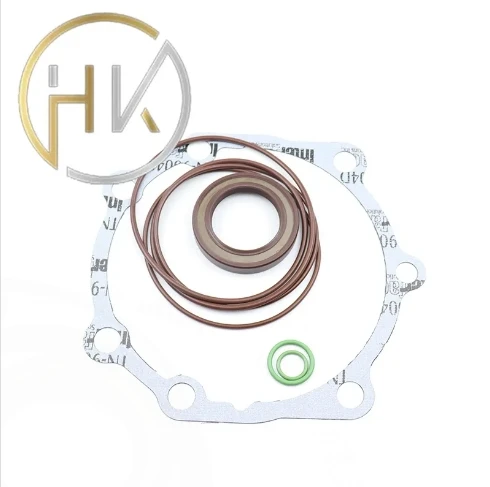វិច្ឆិកា . 30, 2024 11:07 Back to list
Understanding the Importance of Motor Seals in Automotive Applications
Understanding Motor Seals Importance, Types, and Maintenance
Motor seals are integral components in various machines and vehicles, playing a critical role in maintaining performance and efficiency. These seals are designed to prevent the leakage of lubricants and fluids, ensuring that the internal components of motors and engines function smoothly and without contamination. Understanding the types of motor seals, their importance, and maintenance practices is essential for both manufacturers and end-users.
The Importance of Motor Seals
The primary function of motor seals is to contain lubricants within the motor while preventing external contaminants such as dirt, dust, and moisture from entering the system. By doing so, seals protect critical components from premature wear and failure. Proper sealing is vital in engines and motors, as even the smallest leak can lead to significant performance issues and costly repairs.
In addition to preventing fluid leakage, motor seals also contribute to energy efficiency. By keeping lubricants contained, they help reduce the friction between moving parts, allowing for smoother operation and lower energy consumption. This is particularly important in automotive and industrial applications, where efficiency translates to cost savings.
Types of Motor Seals
Motor seals come in various types, each designed to cater to specific applications and requirements. Here are some common types of motor seals
1. Lip Seals These are among the most commonly used seals, featuring a flexible lip that maintains contact with the shaft. Lip seals are highly effective in preventing fluid leakage and can accommodate slight misalignments.
2. O-Rings O-rings are circular seals that are placed in a groove to create a seal when compressed. They are versatile and widely used in numerous applications due to their simple design and effectiveness in preventing leaks.
3. Sealants While not traditional seals, sealants are used in conjunction with motor components to fill gaps and prevent leaks. They are ideal for applications where dynamic sealing is not required.
4. Bearing Seals Specifically designed for bearings, these seals protect against contamination while retaining lubricants, thus extending the life of the bearing.
motor seal

5. Mechanical Seals Often found in pumps and compressors, mechanical seals consist of two mating surfaces that create a seal to prevent leakage. They are used in high-pressure applications and are known for their durability and effectiveness.
Maintenance and Care
Proper maintenance of motor seals is essential to ensure their longevity and effectiveness. Here are some tips for maintaining motor seals
1. Regular Inspections Periodic inspection of seals can help identify wear or damage before they lead to leaks. Look for signs of deterioration, such as cracks, splits, or signs of fluid leakage.
2. Lubrication Ensure that seals are adequately lubricated to reduce friction and wear. Use the manufacturer’s recommended lubricants to maintain the seals’ integrity.
3. Installation Proper installation is crucial for the performance of motor seals. Follow the manufacturer’s guidelines during installation to avoid damaging the seals, which can lead to premature failure.
4. Environmental Considerations Protect motor seals from extremes in temperature and exposure to harsh chemicals. Inappropriate operating conditions can degrade seals and compromise their performance.
5. Replacement If a seal shows signs of wear or failure, it’s crucial to replace it promptly. Delaying replacement can lead to more significant issues, potentially leading to expensive repairs or even complete motor failure.
Conclusion
Motor seals are vital components in ensuring the efficient functioning of motors and engines. By understanding their importance, types, and maintenance practices, both manufacturers and users can enhance machinery performance and longevity. Regular inspections and timely replacements of seals can prevent costly issues and contribute to optimal operation, highlighting the critical role these small yet powerful components play in modern engineering.
-
25x47x7 High Quality Tcv Oil Seal for Hydraulic Pump
NewsAug.28,2025
-
Wiper Oil Seal: Our Commitment to Clean Hydraulics
NewsAug.13,2025
-
Hydraulic Oil Seal for Self Discharging Cars
NewsAug.13,2025
-
Hub Oil Seal for Agricultural Tractor Hubs
NewsAug.13,2025
-
Skeleton Oil Seal with NBR Material
NewsAug.13,2025
-
Rotary Lip Seal for High Pressure Applications
NewsAug.13,2025
-
Cylinder Seal Kits Our Legacy of Hydraulic Trust
NewsAug.13,2025
Products categories
















